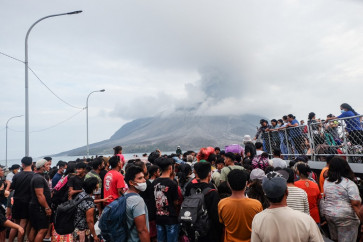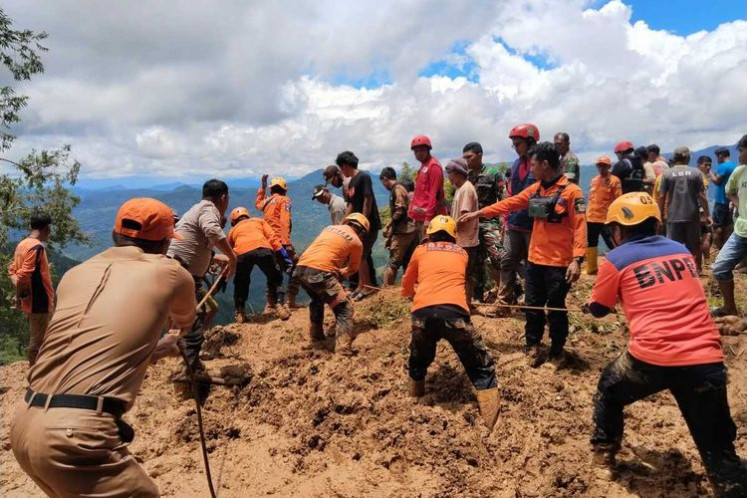Editorial: Coal industry-driven railways
Amid the frustratingly slow pace of seaport improvement, stalled toll road projects and crumbling highways outside Java, very encouraging developments have taken place in the railway sector, which will significantly change the economic landscapes in South Sumatra, and Central and East Kalimantan
Change Size

A
mid the frustratingly slow pace of seaport improvement, stalled toll road projects and crumbling highways outside Java, very encouraging developments have taken place in the railway sector, which will significantly change the economic landscapes in South Sumatra, and Central and East Kalimantan.
A US$1 billion, 130-kilometer railway project is under final preparations for construction in East Kalimantan by MEC Holding, a 50-50 joint-venture between the United Arab Emirates Ras Al Khaimah (RAK) Investment Authority and Indian Trimex group.
The first private railway in Indonesia will link the Muara Wahau coal mine in East Kutai regency with the coast where MEC also is spending $250 million on a new seaport terminal. These infrastructures are designed to support MEC’s coal mine, aluminum smelting and coal-fired power and fertilizer plant projects in East Kalimantan, all costing around $5 billion, which also involve India’s state-owned National Aluminum Co. as a major shareholder. Tender preparations are underway for another 185-kilometer railway project worth $1.5 billion in Central Kalimantan, also designed to facilitate an efficient haulage of coal from mines to seaport terminals.
According to Central Kalimantan Governor Teras Narang, the project will be developed under a public-private sector partnership scheme whereby the private investors will be granted a 30-year operational license.
Last Wednesday, the South Sumatra administration, state-owned coal company PT Bukit Asam and PT Adani Global from India, signed an agreement to build a 270-kilometer, $1.67 billion railway project to expedite the haulage of coal from Bukit Asam’s coal mine to a coal terminal at Tanjung Api-Api port.
These projects should be welcomed as a huge vote of confidence from international investors in Indonesia’s bright, long-term economic prospect with its rich variety of mineral resources and market potential of almost 240 million people. Leaders of another Indian business group, Reliance, revealed last week of the company’s plan to plough $5 billion into a coal, railway and seaport projects also in South Sumatra.
Rail infrastructure is most cost-efficient for transporting large volumes of minerals from inland mines to seaport terminals either for inter-island or export shipments. But expediting coal haulage for interisland or export shipment is only one of the benefits of the railway projects.
First of all, the infrastructure will open up many new development areas in the three provinces, which together account for more than 80 percent of the country’s thermal coal output of more than 250 million tons a year.
Moreover, railway development is cheaper and easier to be implemented because the train requires lower investment than any other mode of land transportation. A railway track would typically require an average of 25 meters in width compared to a toll road that may need up to 60 meters in width.
Yet more important is that railway transport is more energy efficient because a train carries more freight or passengers. For example, a train with eight carriages can carry around 1,500 people, equivalent to a fleet of 20 buses.
Other regions interested in accelerating the development of infrastructure could take good lessons from these projects. The three coal industry-driven railway projects have the same basic element that has expedited their preparations: Strong commitment from the regional administrations to expediting licensing procedures and ensuring smooth acquisition of land.
Certainly the all-out campaign by the central government to convince foreign investors in Indonesia’s long-term economic prospects has also played a significant part. The biggest challenge now is to see to it that the construction will run smoothly so that the three projects can become a confidence-building block for other regional administrations in wooing investment.









